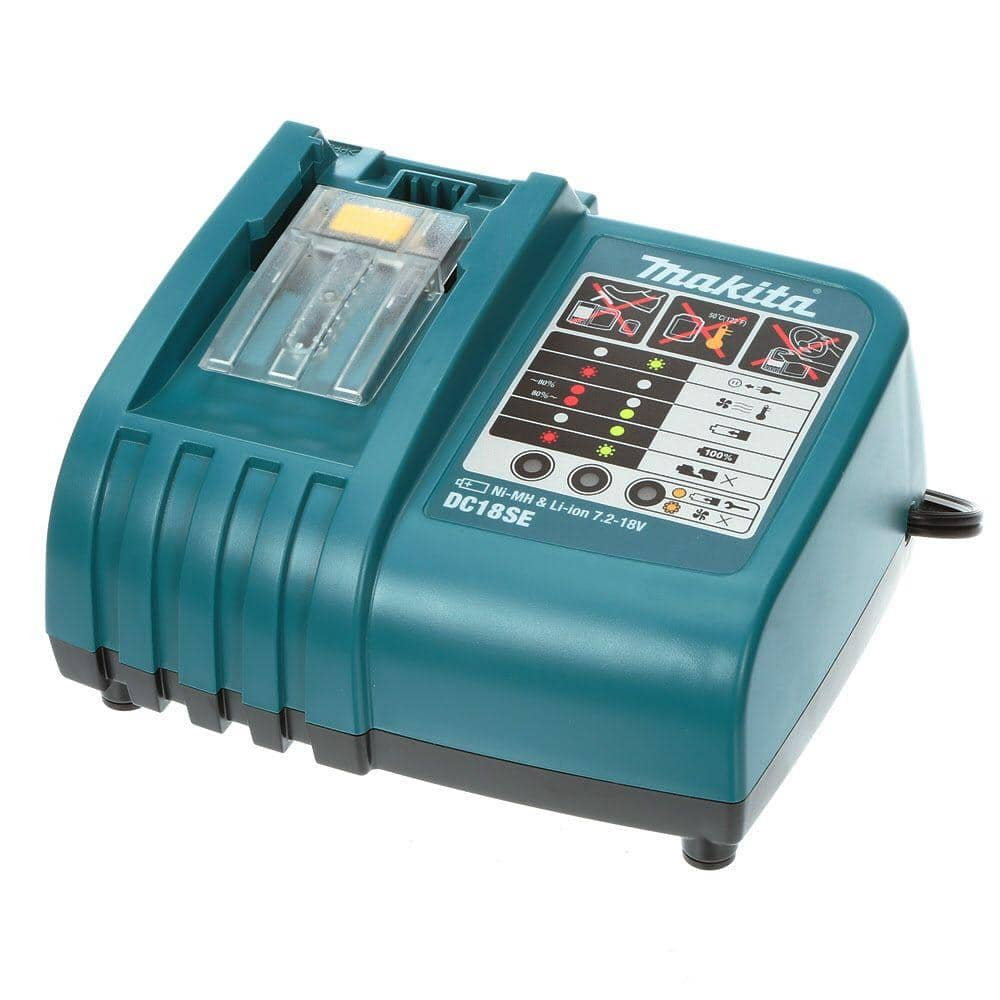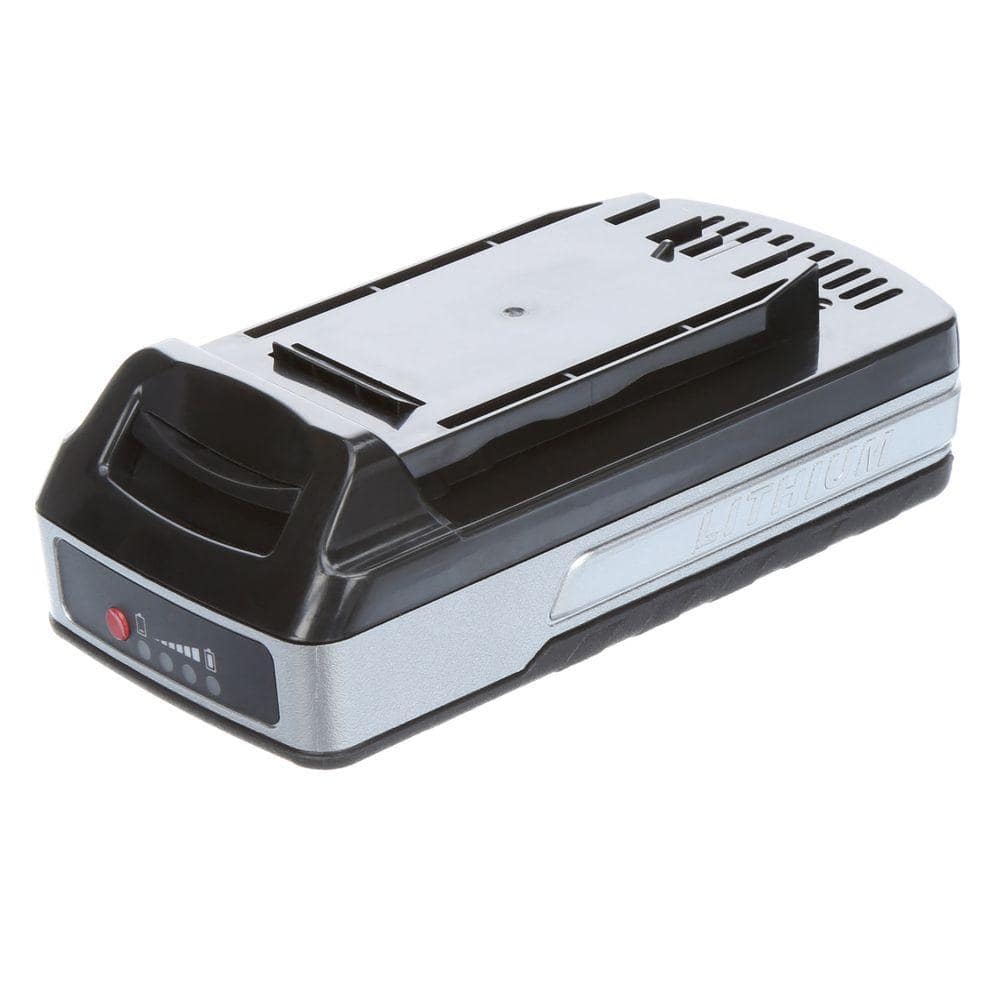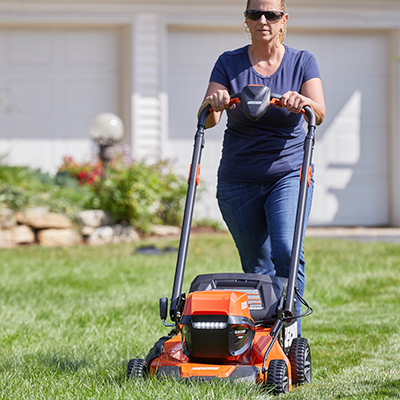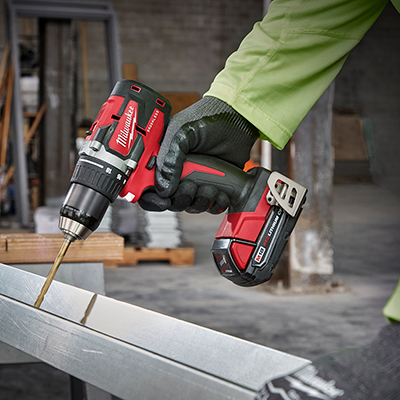Cordless Battery Buying Guide

Last updated March 6, 2024
The cordless, battery-powered tools landscape is vast, so making a choice can seem overwhelming. This guide will help you understand tool batteries and make the best choices to suit your needs.
Topics we will cover in this guide include voltage, amp hours, specialty tools, outdoor power equipment and more.
Table of Contents
Things to Consider When Selecting Battery Powered Tools
Size, Weight and Portability
Capabilities vs Cost
Cordless Battery Types
Battery Voltage
Battery Chargers
Things to Consider When Selecting Battery Powered Tools

When looking into cordless battery-powered tools, you may wonder:
- What projects do you expect to take on?
- What is your budget?
- How often will the tools be used? (This is often called “duty cycle” in the tool world.)
- What are the size, weight, capability and durability of the tools on the battery platform?
- What's the availability of common and specialty tools?
The first thing to consider is your main use for cordless tools. What is the best battery for power tools? That question brings up other questions. Are you a serious DIY home renovator? Do you love building birdhouses to help native birds thrive in your environment? Are you an electrician or plumber? Will you be framing houses or building decks?
A major consideration can be which tools are available for the projects you most often do. For example, a new homeowner needs to know if a string trimmer can share batteries with the power tool starter kit she just bought. A plumber should look at all the specialty tools available on a battery platform. It makes sense for the drill to use the same battery as the drain auger, crimping tool and bandsaw.
Size, Weight and Portability

Size, weight and portability are factors in choosing the best power tool batteries for your needs. Is your work primarily in a workshop or around the home? If so, the weight and size may not matter as much. Do you take multiple tools on site to install cabinets? Then weight and size become very important.
In many cases, tools built for professional use are smaller and lighter, for similar power output, than a tool intended for DIY or homeowner use.
Look at all available voltage ranges, covered later in this guide, to determine if 12 volt tools will work for you, or if you will benefit from the added power or versatility of 18 volts.
If possible, visit The Home Depot to see and hold the tools. Firsthand experience will help determine what is the best battery for power tools for your unique situation.
Capabilities vs Cost

When it comes to battery tools, everyone wants superhero capabilities. However, if you don't expect to drill 1/2-inch holes into concrete, you can save money by selecting a tool range made for lighter duty.
The internet is riddled with comparisons between products. Many try to convince tool buyers that the most powerful saw that cuts through a sheet of plywood the fastest is the best choice. On a roofing crew, those seconds add up. If working on occasional weekend projects, those seconds aren’t significant when compared to the cost.
If you are on a roofing crew, consider the familiar saying that “time is money.” Spending a few extra dollars on the fastest battery tools to save 15 minutes a day might be a solid financial decision.
Cordless Battery Types

In years past, there were several types of battery chemistry available. NiCd, NiMH and Li-Ion. Today, Li-Ion, or “lithium,” has taken over the vast majority of the battery powered tool market. It has proven to be the best battery chemistry for power tools.
There are various types of lithium batteries available. Most work within a particular manufacturer's product line and are designed to get higher performance from certain tools that are optimized for use with them. These are usually marked as being higher output and cost more than the standard batteries.
The big decision today is what voltage class is best for your specific needs. Voltage varies within each class, even when the ratings are similar, based on how the manufacturer uses and measures the stored power.
Battery Voltage

There is more to electricity than voltage. Higher voltage doesn’t always mean a more powerful tool. That’s why some 18 volt battery tools perform better than 120 volt corded tools. However, it is the easiest way to classify tool ranges.
The voltage classes are:
- 4-8 volt. Small tools that have limited power but great utility around the house. They’re perfect for hanging pictures, assembling flat pack furniture and precise sanding tasks, among many others.
- 12 volt. These tools have a surprising amount of power and utility in a small size. They’re often as powerful as previous generations of 18-20 volt tools. Their small size means less storage space, easy portability and less stress on the user from weight. Many professional mechanics, electricians, plumbers, woodworkers and cabinet installers opt for 12 volt tools for these very reasons. They often come at a lower price tag, even in professional lines.
- 18-24 volt. This range is the most popular and is the workhorse of most tool lines. These tools are equal to, and are sometimes more, capable than their corded counterparts. Construction job sites and woodworking shops are often outfitted with these tools. They’re also the most widely used do-all size, as there are more tools in this category than any other. Hand tools, outdoor power tools, vacuum cleaners, tire inflators, Bluetooth stereos, misting fans, 120v power inverters and many, many more tools and devices are powered by these versatile power packs.
- 40+ volt. These tools are primarily in the range of outdoor power equipment, although some hand tools are in this range as well. These outdoor tools use battery power to replace a gasoline engine. Leaf blowers, chainsaws and riding lawnmowers are in this class of tool.
Battery Chargers

Power tool combo kits come with a charger, a few tools and a few batteries. A kit is a great way to get started in battery powered tools. They come in all sizes, from a drill and driver kit to a set of tools to outfit an entire workshop.
Once a battery platform is chosen, adding tools that accept the same batteries is convenient and cost saving. Say you already have a drill, impact driver, circular saw and light that came in a kit with a charger and two batteries. When the time comes to buy an orbital sander or tire inflator, it makes sense to buy tools that use the same batteries. It saves money and space. There’s no need to buy another battery and charger set then find a place to store them.
Most tool companies offer power tool battery chargers with extra features, like multiple battery bays, fast charging with a cooling fan or the ability to charge in a car.
Some battery platforms have several levels of battery within them. The buyer can choose to save money on a standard battery or spend more for extra performance from another model that fits the same tool.
Most battery platforms and voltage ranges have batteries of different capacities, which is measured in amp hours.
Tip: Many tool users will choose to set up a charging station and tool organizer. This can be a fun DIY project, or you can look into ready-made solutions.
What About Amp Hours

- Battery pack storage capacity is measured in amp hours.
- Amp hours is abbreviated “AH.”
- Amp hours relate to the physical size of the battery because higher capacities are achieved by adding more of the internal cells to the battery pack. A 3AH battery pack is smaller than a 6AH battery pack, because there are twice as many internal cells in the 6AH pack.
- Most users will opt for lighter batteries on tools that are being lifted and carried all day, like an impact driver. A 3AH battery will provide all-day power and create less strain on the user.
- Heavier batteries are often preferred for high drain tools like circular saws or vacuum cleaners for improved performance. These tools would drain a small battery quickly due to higher current drain and longer continuous run times.
- On the same tool, doing the same work, a battery pack with a higher AH rating will provide similar or better performance for a longer time. There’s a bit of an “it depends” factor in this because tools that have very high demand will generally perform better with higher AH batteries on the same battery platform.
- Some high drain tools are designed to balance with the weight of the larger batteries. This is often the case with professional outdoor power tool batteries.
- Tools vary as to how much power they draw. An impact driver uses less power than a drill and they both use less power than an angle grinder. The capacity and number of batteries needed will be determined by which tools are being used and how long they are in operation.
Types of Cordless Power Tools

In the early days of battery powered tools, they were limited to a drill or a handheld flashlight. Run times were short and power was low. Today, batteries can power most of the tools that used to require a power cord or compressed air line. Batteries also power many new tools and devices that didn’t exist as corded tools.
- Drills, impact drivers and screw guns.
- Wrenches and ratchets for industrial, automotive and construction applications.
- Nailers from 23 gauge headless pins to framing nails.
- Saws of all kinds. Circular, reciprocating, jigsaws, chainsaws, wet masonry, metal, miter, table and more.
- Angle and die grinders of many styles and capacities.
- Belt, random orbital, 1/4 sheet, and detail sanders.
- Polishers and scrubbers.
- Sprayers for cleaning indoors and lawn care outdoors.
- Lights, including handheld, headlamps, collapsible stand and area lighting.
Some tools, like random orbital sanders, are easier to operate with a battery than with a cord. Holding the sandpaper flat against the project is easier when the balance of the tool doesn’t change based on how much cord is stretched out behind it. The plug never catches on the end of the board, causing the sandpaper to cut a half-moon scratch on that tabletop that was almost finished.
This isn’t only true for sanders. A worker can climb a ladder with a battery nail gun and never worry about someone on the ground tripping over the air hose while the nails are being driven.
Outdoor Power Equipment

- Batteries aren’t only removing the electrical cord but they’re increasingly replacing gasoline engines by way of cordless outdoor power equipment.
- Traditionally, outdoor power equipment meant trips to the gas station with a gas can. Two stroke engines require mixing gas and oil, then produce billowing clouds of exhaust smoke.
- Internal combustion engines also need maintenance, like cleaning air filters, oil changes and new spark plugs.
- Then there’s the noise. Gasoline powered equipment is so loud that you need hearing protection when you operate it.
- Even large properties can be maintained and beautified with battery power.
- Capabilities don’t have to be sacrificed when switching to battery power. Many tools operate at or above the level of gasoline engines.
In most cases, the limiting factor isn’t the capability of the tool but having enough batteries. That’s why choosing the best battery platform is important.
Some outdoor power equipment that can use batteries include:
- Riding lawn mowers
- Push lawn mowers
- String trimmers
- Chainsaws and pole saws
- Leaf blowers
- Mulchers
- Snow blowers
- Sweepers
Specialty Cordless Tools

Many jobs require tools that perform special functions. No matter the industry or hobby, there’s probably a tool that will make the job easier and faster with battery power. These are just a few:
Building trades:
- Liquid transfer pumps
- Pipe crimping tools
- PEX pipe expanders
- Electrical box punches
- Concrete pencil vibrators
Automotive and body work:
- Powered ratchet wrenches
- Impact wrenches
- Polishers
- Die grinders
- Tire inflators
- Battery jump-start boxes
- Rivet tools
- Sheet metal cutters
Hobbies:
- Rotary tools
- Soldering irons
- Hot glue guns
- Power inverters
Homeowners:
- Bluetooth speaker systems
- Vacuum cleaners
- Scrub brushes
Taking Care of Tool Batteries

You bought the best tool and the best battery to power it, but how do you keep them operating at top performance?
- Heat is the main thing that damages batteries.
- Extreme cold can damage them as well.
- Store batteries in a dry, moderately temperate environment.
- When a battery gets hot in use, allow it to cool before using it again or charging it.
- Don’t run the battery completely empty. If the battery is getting low, charge it.
- Older battery technologies had to be run all the way empty before being charged. This isn’t the case with lithium batteries. If you finish the job at 40 percent charge, it’s better to put it on the charger than to wait.
- Don’t store batteries on the tool for long periods of time. Some tools will drain the battery even if not in use.
Selecting a battery tool platform is a big decision. Understanding the terminology is an important part of making a smart choice. Use The Home Depot Mobile App to find the batteries you need.































